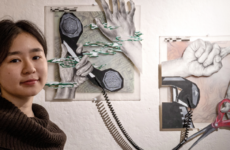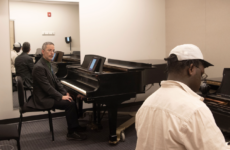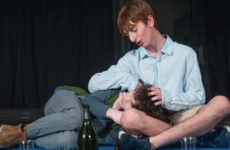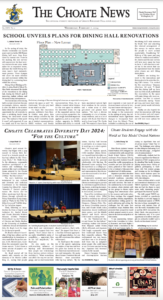This fall, seniors in the Visual Arts Concentration program completed portfolios as part of their Advanced Studio Art Portfolio class. This required course teaches students how to compile portfolios, a necessary skill for artists’ college and job applications. Each of the three sixth-form artists’ strengths in different mediums — Stella Dubin ’21 in oil paints, Senching Hsia ’21 in acrylic and gouache, and HP Park ’21 in 3D models and animations — were demonstrated in their diverse portfolios.
The pieces from Dubin, Hsia, and Park’s portfolios, as well as more of their works, will be featured in their Senior Art Show exhibition in the spring term.
Stella Dubin ’21
Dubin’s portfolio consists mostly of oil paint portraits. Her favorite piece — a portrait of a woman in front of scarlet curtains whose face is framed by vividly-colored roses — was painted in Spain during a summer abroad in 2019. In La Coruña, Dubin attended a rigorous visual art workshop that spanned from eight in the morning to six at night for five consecutive days, and this painting was one of many culminations of her efforts.
“It was the first time that I had done something from a model that I made creative decisions with,” Dubin said. “With a model, you kind of just draw what they’re doing. You draw a full body, and you don’t think about composition, so this was the first time I tried something outside of that.”
Another piece in her collection features an indignant woman with a disorderly background marked by holes pierced in the paper. This crayon and oil pastels piece was inspired by “The Yellow Wallpaper,” a short story exploring women’s mental health in the 18th century. Dubin read the piece for her American Studies class last year, and the protagonist’s anger and passion affected her profoundly. The emotions she felt manifested themselves in furious strokes and the destruction of the paper canvas.
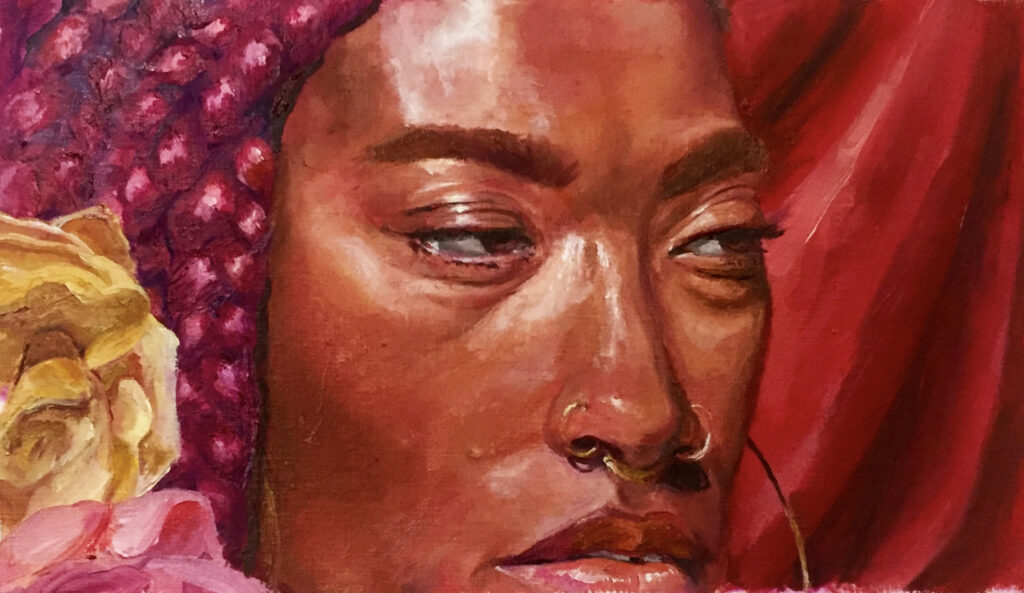
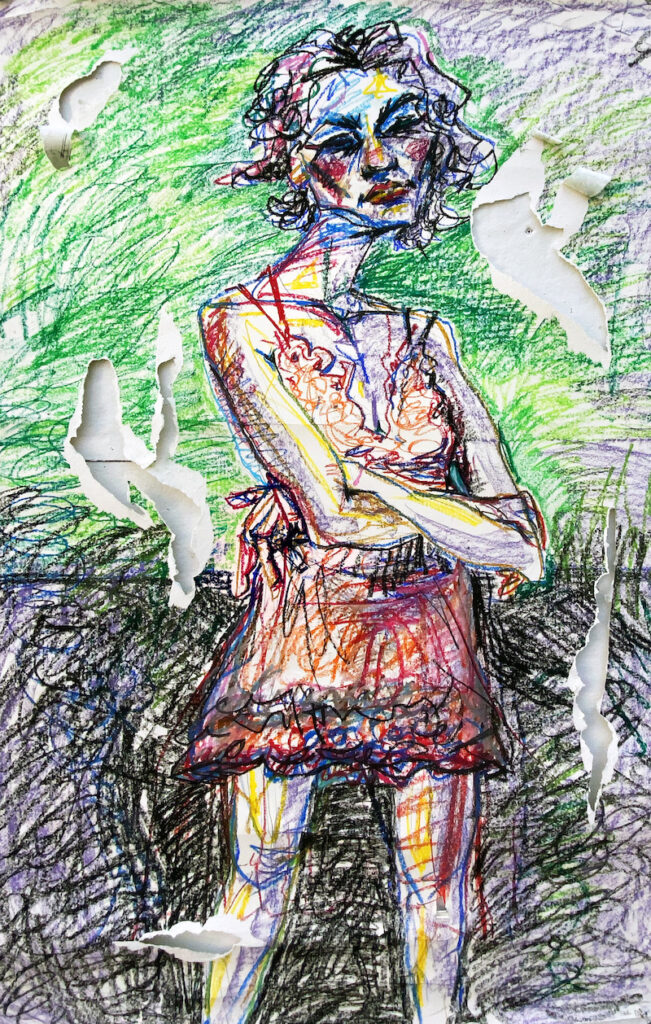
Senching Hsia ’21
Hsia’s portfolio featured paintings on wildlife and the natural environment. Her work is surprising in its composition of animals — in her painting of a fish, for example, Hsia portrays the aquatic animal with avian wings consisting of various feather patterns. In another piece, Hsia depicts a tiger with the features of a lion, leopard, bison, and okapi (also known as forest giraffes).
Combining her love of art and science, Hsia was inspired by her animal subjects both in an artistic and environmental sense. Through her art, Hsia hopes to spread appreciation for nature. To her, pieces rooted in nature are doubly powerful, acting as both a literal rendering of the subject itself and as an inspirational piece of artwork. Hsia said, “There’s the underlying message that there is something to lose because of climate change and global warming. There is the potential to lose this source of beauty and inspiration.”
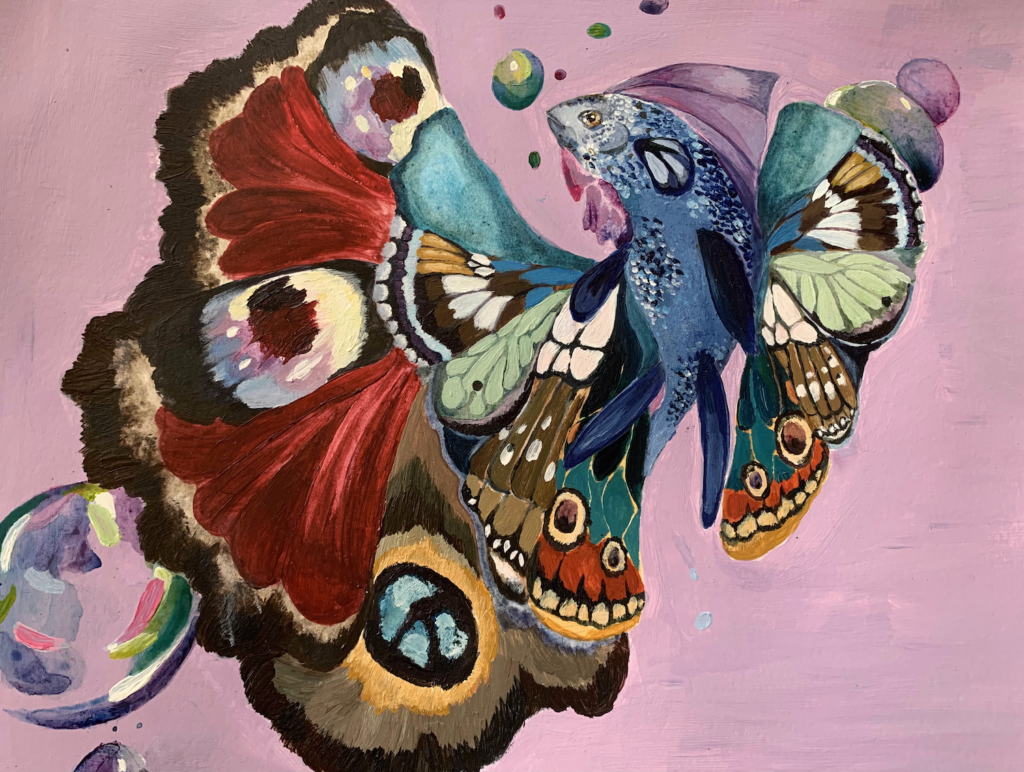
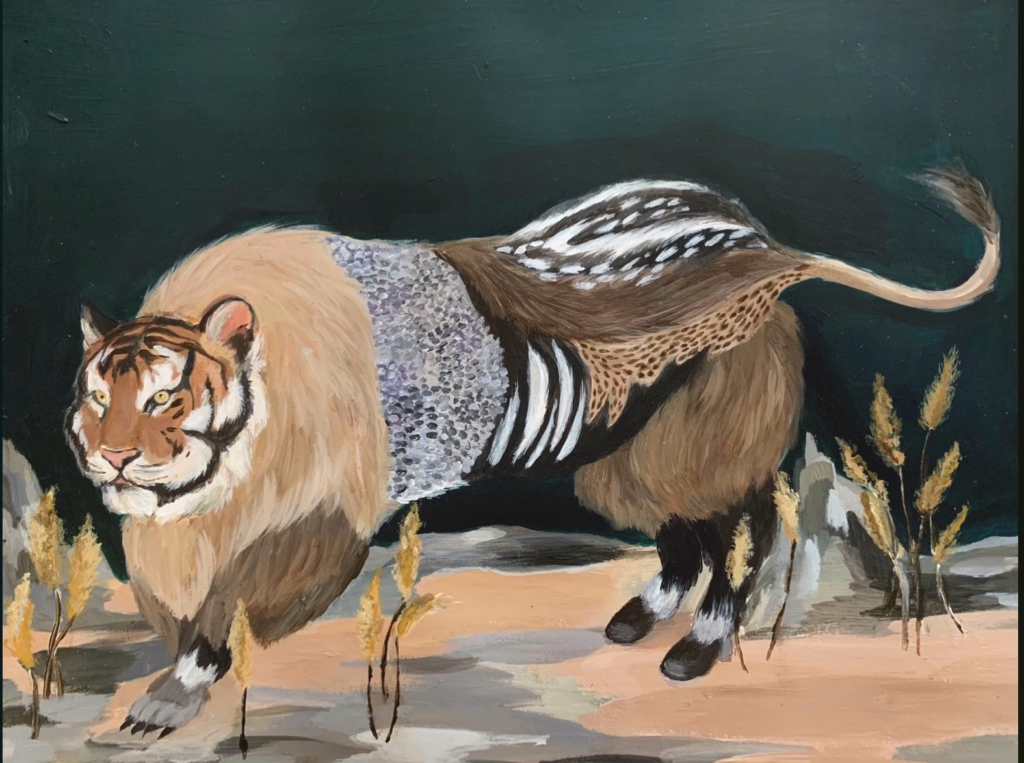
HP Park ’21
In contrast to Dubin and Hsia, Park chose to work with nontraditional art mediums in his portfolio. Even though one of Park’s pieces was also influenced by tigers, Park’s “tiger” uses zoomorphism to combine the features of a train and a tiger, creating a sleek vehicle with resemblances to the wild animal’s color pattern and jaw shape. Park looked to industrial and technological aspects of human society for inspiration; the train and station feature deco influence paired with a hypermodern, metallic, and angular style, giving his work a futuristic feel.
Because Park primarily works with 3D digital modeling and animation, he designed the train as a part of his upcoming short film “Momentum.” Originating from Park’s goal of challenging himself to design a locomotive, the film discusses the growth of artificial intelligence and the fear of robots replacing the workforce. He hopes that “Momentum” will show an alternate future universe in which man can coexist with machine.
“The direction of the film is not to antagonize these robots, but more so teaching people how we should find solutions to address these problems,” Park said. After all, he explained, robots were designed to solve problems. In his film, Park hopes to convey that just because robots also created new problems doesn’t mean they should be wholly rejected.
“By the end, no one antagonizes each other, but rather the human workforce and the robotic workforce find better solutions to coexist.” He added, “It’s a film that addresses the problems and hopes of a not-so-distant future.”



All art by Stella Dubin ’21, Senching Hsia ’21, HP Park ’21

